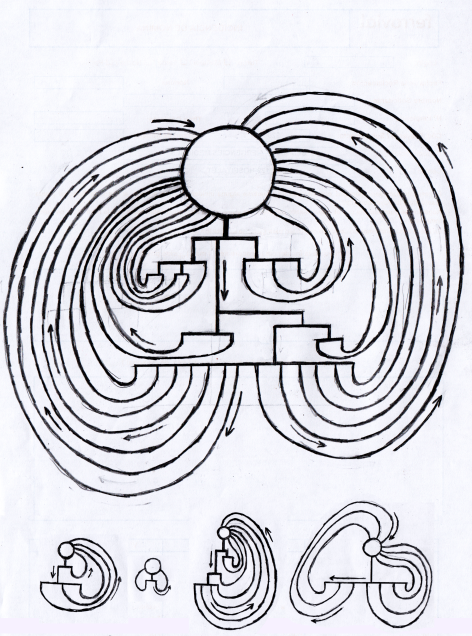(<BACK)
GOVERNMENT/

Network oriented approximations to the 21st century capitalist State:
This is an ongoing project that explores and begets algorithmic-like methods of analysis of our established institutions and social interactions which aims to expand our perception of the material body of society, something increasingly enormous and simultaneous, and too big for us to grasp consistently.
We try to produce some graphics through which the structural composition of social situations could be recognised and conveyed reliably among people, so, potentially, undesirable situations could be pointed out.
This may appear a little bit of a counter-current effort in a post-structuralist dominated field such as Visual Arts, in wich the limitations of any geometrical/mathematical representations would be the focus, but I am still faithful that the practical power of images may convince us that we could still use a little bit more of structural analysis to complement our consciousness of the intricate networks that make our society.

![]()

|
"Let's be simple and bluntly honest about it, left or right, conservative or liberal, broadcast politics are dumb, dumb, dumb" |
 / Government / THE PICTURE
/ Government / THE PICTURE
This is an attempt to produce a somehow realistic institutional map of a fully operational Capitalist State, in that case the Catalan Autonomy in Spain. The right hand side of the picture presents the parliamentary side of Government while the left side portrays its executive branch. The bannana-shaped sections at the bottom represent the population that promptly segregates the various institutions, ultimately the Parliament. In the Center we see, as a sort of hinge, a more allegorical depiction of the judiciary and penitentiary systems, that toguether with law enforcement enclose the population defining a frontier. What is missing in the picture is the Land and any phisical space.
As you can see, there is a more serious technical effort towards actually depicting the aparatus of the State using a cartographic code with discipline wich overlaps with a more playful attempt to add literature and meaning in order to fully explore the possibilities of this methodology while producing our particular social critique.
------------
(Further Political Particles...)

|
|
|
|
|
 |





